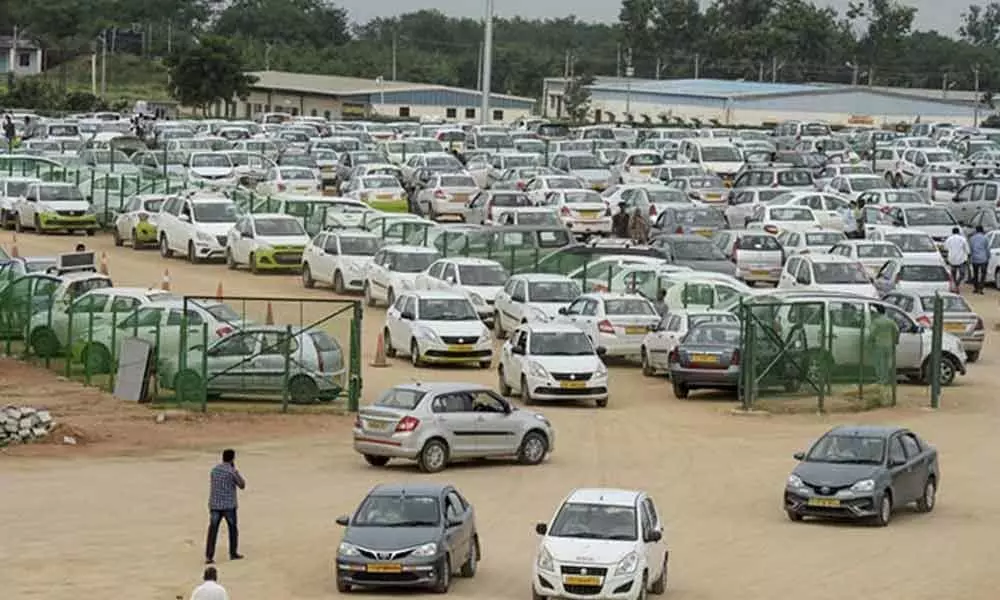Millennials, Taxes or Failed Policy? Blame Game Ensues as Wheels Come Off India's Auto Sector

When Finance Minister Nirmala Sitharaman claimed that a preference by millennials for ride-hailing apps was contributing to a painful slump in car sales, it sparked an online backlash from furious youngsters.
New Delhi: When Finance Minister Nirmala Sitharaman claimed that a preference by millennials for ride-hailing apps was contributing to a painful slump in car sales, it sparked an online backlash from furious youngsters.
They started a campaign using ironic hashtags such as #BoycottMillennials and #SayItLikeNirmalaTai last week to push back against older generations blaming them for today's problems in society.
While data shows firms such as Uber and Ola are popular with younger consumers more comfortable with shared mobility and digital trends, analysts say the auto industry's problems run deeper than that — and it is facing more serious bumps in the road.
With a population of 1.3 billion people, India is the world's fourth-largest car market and one where owning a vehicle is as much a status symbol as a means of transport.
But the country's once-booming auto sector — seen as an important barometer of overall economic health — is in the slow lane, with sales slumping for the 10th-straight month in August.
"The minimum (priced) car that you can get nowadays starts from six to seven lakhs ($8,500 - $9,800)," university student Somya Saluja told AFP. "So it's much easier to pool-in rather than to buy a new car."
Even India's richest banker, Uday Kotak, recently said that his son was more comfortable using ride-sharing apps than owning a car. Uber and Ola reportedly facilitate some 3.65 million daily rides.
Still, Avanteum Advisors managing partner VG Ramakrishnan said the key reason for the drop in car purchases was economic. "I think the slowdown is primarily because consumer confidence is low and income growth has really been impacted in the last couple of years," he said.
India's economic growth slowed for the fifth-straight quarter in April-June to reach its weakest pace in five years.
Banks are also more reluctant to lend owing to a liquidity crunch caused by the near-collapse a year ago of IL&FS, one of India's biggest shadow banks — finance houses responsible for significant consumer lending.
There are also extra production costs caused by new rules requiring cars to be compliant with emissions and safety standards, while a 28 per cent goods and services tax (GST) introduced in 2017 has dampened demand, analysts said.
"Cars are increasingly becoming unaffordable now because of so many taxes," Karvy Stock Broking auto analyst Mahesh Bendre said. "To put things in perspective, if you buy a car in India, at least 40-45 per cent of costs go to the government in terms of taxes and registration charges and so on."
Calls for tax cut
A year ago, India displaced Germany to become the world's fourth biggest car market, having clocked up annual sales growth above seven per cent for several years.
But the promising growth ride is screeching to a halt, with passenger car sales tumbling this year, including a 41 percent drop last month — the worst since records began more than 20 years ago. Aside from passenger cars, sales of commercial vehicles, motorcycles and scooters have also been hammered.
With the industry — a major employer in India — contributing more than seven per cent to total GDP and almost half of manufacturing GDP, the potential fallout from an extended slowdown is sending shockwaves through the economy.
Manufacturers are reducing production and cutting jobs, which is also affecting related industries such as auto component manufacturing and at dealerships, totalling about seven percent of India's total workforce, Bendre said. "The entire ecosystem is huge — around 20 per cent of the population could be dependent on the auto sector," he added.
In a bid to boost sales Sitharaman has lifted a ban on government departments purchasing new vehicles, but automakers say she needs to do much more — such as cutting GST to 18 per cent ahead of the festive season, traditionally a bumper sales period.
With India home to 22 of the world's 30 most polluted cities, according to Greenpeace, any sales incentives have to factor in the environmental crisis, Ramakrishnan said.



















